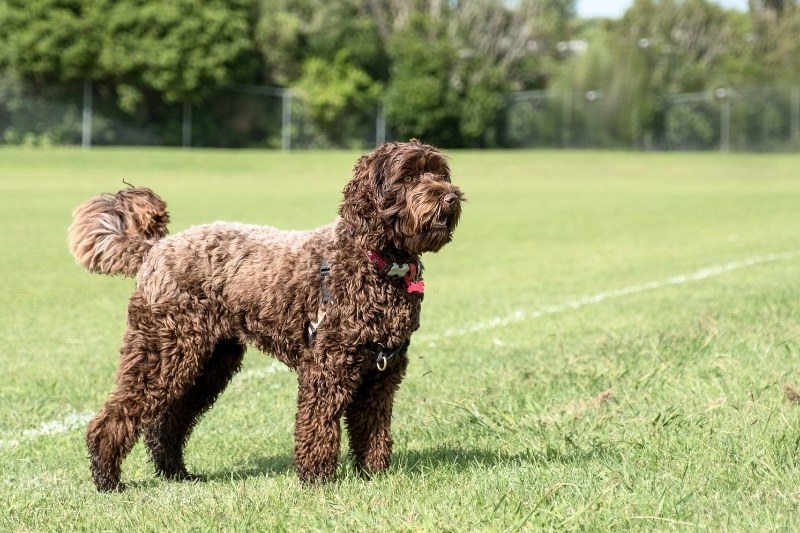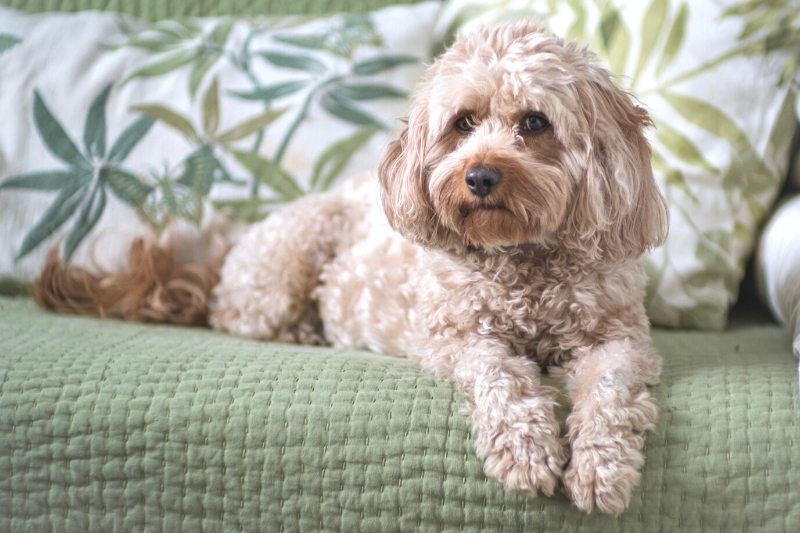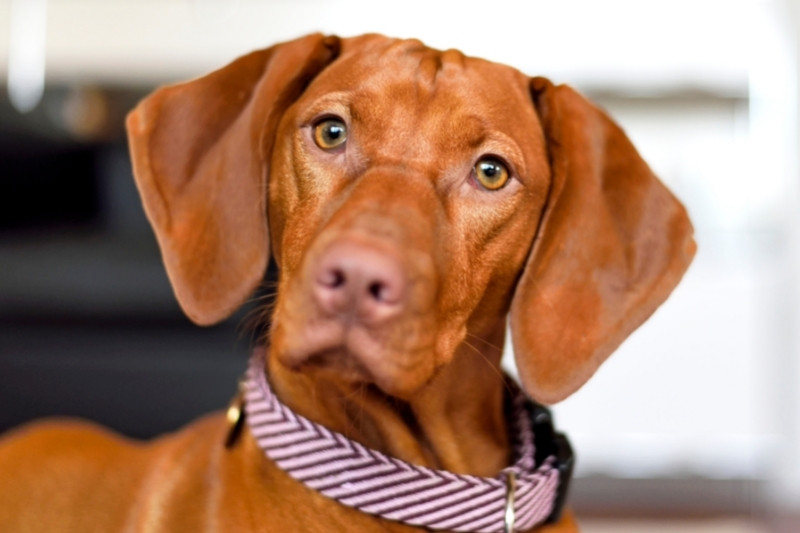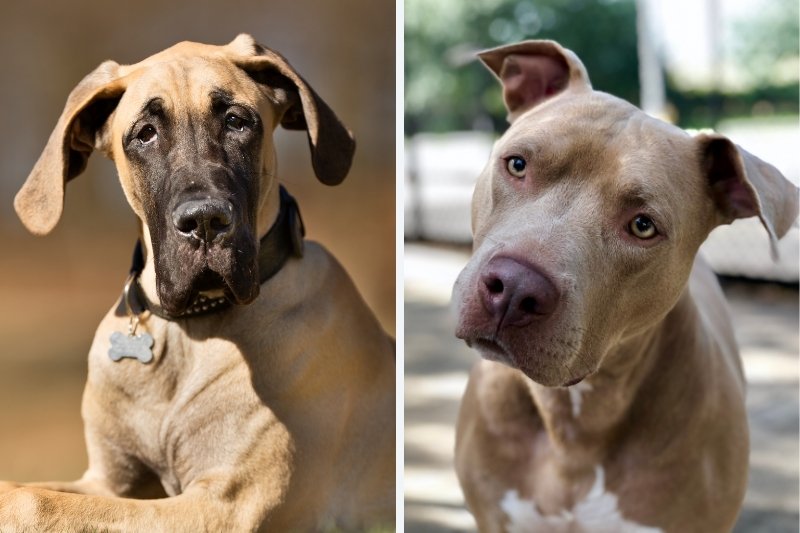Labradoodle: everything about this Labrador and Poodle Mix

The Labradoodle is one of the most desired designer dog breeds in America – all you have to do is look at one, and it's easy to see why.
But it's not all about how cute these pups are. When you mix the intelligence and hypoallergenic fur of a Poodle with the sweet and outgoing nature of a Labrador Retriever, you have one pretty perfect pup.
Are you thinking of adopting a Labradoodle puppy? Or perhaps you want to know the exercise requirements of a full-grown Labradoodle? Here's everything you need to know about this hybrid dog breed.
Origin and history of the Labradoodle
To fully understand the history of the Labradoodle, it's best to have a look at both parent breeds.
History of the Labrador

Labradors originated in Newfoundland, a large island off the east coast of Canada.
The island is actually part of the Newfoundland and Labrador province – which is where these pups get their name from.
They're closely related to St John's Water Dogs, a breed that no longer exists and eventually divided into two breeds – the larger Newfoundland dogs and the original Labrador. These pups were incredibly talented at helping fishermen retrieve nets, long lines, and fish that had managed to escape.
In the 1830s, European settlers saw how impressive these dogs were and decided to take them back home with them. They were then bred with local hunting dogs to create what we know as the adorable Labrador Retriever today.
History of the Poodle

Poodles are an ancient breed. In fact, poodle-like images have been found on Egyptian and Roman artifacts and tombs. This naturally makes it more challenging to know precisely when these pups originated and where they come from.
Most experts agree that Poodles originated in Germany but were further developed in France. Some think that they are the result of crossbreeding various different European Waterdogs and others believe they arrived in Portugal in the 8th century and originated in Asia.
What is sure is that they're a very old breed and that Miniature Poodles and Toy Poodles were further bred in France.
Standard Poodles were used for hunting ducks, Miniature Poodles to hunt truffles, and Toy Poodles as cute little companion dogs for the French elite.
History of the Labradoodle
Often, with mixed breeds, little is known about the exact origin because it's difficult to pinpoint whether a pup was first bred naturally or not.
That's not, however, the case with the Labradoodle. They were first bred in the 1980s in Australia by a guide dog trainer named Wally Conron. He specialized in breeding hardworking Labradors and Golden Retrievers but wanted to breed a hypoallergenic one that could help blind allergy sufferers too.
Poodles are well known for being great non-shedders, so Wally decided to breed these intelligent canines with his working Labradors. The result was a great success!
Many people, however, didn't want a mixed breed assistance dog, and it took him many years to prove how great these dogs are.
Both the Australian Labradoodle Association and the International Australian Labradoodle Association are trying to incorporate more intergenerational breeding so that these pups can officially be recognized as purebred.
Temperament and personality of the Labradoodle

Labradoodle puppies and adult dogs are adoring and devoted. They're very sweet-natured and love to be around their whole family.
Playing is a huge part of any Labradoodle's day, and they'll love to spend time running after a ball or working out a particularly difficult puzzle toy.
These fluffy dogs are very sociable and confident around strangers. They get on well with children, dogs, and other pets and love to make new friends. In all likelihood, they'll be the first to run up to other dogs in the dog park and introduce themselves.
These hybrids are very energetic and need a good amount of space to explore and run around in. They're also just as happy to snuggle up with you on the couch and enjoy a good film.
Training a Labradoodle
Just like the purebred Poodle and Labrador, Labradoodles are very intelligent.
They excel in all sorts of dog sports and training classes and really benefit from new and exciting things to do. These intelligent dogs love to please their owners, make them laugh, and are keen to do as they're told.
For example, if taught from a young age not to bark (unless they need to) Labradoodle puppies are pretty quiet dogs.
Lots of socialization is important for Labradoodles – they'll love playing with other dogs in a puppy kindergarten class and will benefit from learning for older pups.
In fact, Labradoodles generally enjoy everything they do – including training!
Because they're so affectionate, they can be a little sensitive. They also respond best to exciting training and positive reinforcement and don't like being told off or raised voices.
If you want your Labradoodle to learn, it's essential to encourage them rather than scold them. They also respond well to the odd treat!
Appearance of the Labradoodle

As well as their loving and affectionate personalities, the unique appearance of a Labradoodle is something else that makes them very popular.
These dogs look like little teddy bears! They have large, wide eyes and a happy and curious expression. Because there isn't a standard for this dog breed yet, they come in all different shapes and sizes, and their coat color and texture can vary quite a lot.
How big do Labradoodles get?
We really have to consider the purebred dogs behind this amazing hybrid to know this.
Labradors are always medium to large canines, stand at roughly 23 inches tall, and weigh between 55 and 70 pounds.
Poodles, however, come in 3 different sizes (standard, miniature, and toy). Because a Labrador Retriever is mixed with a Poodle, the Labradoodle also comes in 3 sizes (standard, medium, and miniature).
Just like the Miniature Poodle, the miniature Labradoodle is especially cute.
These little dogs can be between 14 and 16 inches tall, the medium 17 and 20, and the Standard Labradoodle can grow to be 21-24 inches.
Depending on which Labradoodle you adopt, they can weigh between 15 and 65 pounds.
Generally speaking, male Labradoodles will be a bit bigger than female Labradoodles.
Labradoodle color
The American Kennel Club recognizes 3 Labrador colors – black, yellow, and chocolate. But these pups can also come in red, silver, and white.
On the other hand, Poodles come in many different colors (everything from black to apricot). So, as you can imagine, Labradoodle puppies can be many different colors and combinations too.
Some are caramel, chocolate, black, red, chalk, gold, and sable.
Labradoodle coat
Whether you get a chocolate Labradoodle or a particolored one, their coat texture can vary a lot. There are three main types of coat:
- Hairy: this coat is usually shorter and wirier (think Terrier). It's likely to shed a little more and will smell when your pup (inevitably) goes for a swim. This coat type is found in first-generation Labradoodles (puppies with Poodle and Labrador Retriever parents).
- Wooly: this coat is dense and very soft, kind of like a sheep's (or Poodle's). These coats shed less than the hairy ones and have a less distinctive ‘doggy' odor.
- Fleecy: a Labradoodle with a fleece coat will have long, wavy hair. In many people's opinion, this is the most attractive coat.
Are Labradoodles hypoallergenic?
No dogs are fully hypoallergenic; they all shed at least a little bit. But many Doodle breeds (Poodle mixed breeds) were originally bred specifically because Poodles are low-shedders. Labradoodle breeders wanted the fun personality of a Labrador but with the low-shedding coat of a Poodle.
If you suffer from allergies and don't want dog hair all over your furniture, the Labradoodle could be a really good choice.
Grooming a Labradoodle
Labrador Retrievers have a double coat and therefore shed quite a lot – especially before the seasons change, and they need to grow a warmer or cooler one. Luckily, Labradoodles inherit the single coat of their purebred Poodle parent and therefore shed less.
Even though they don't shed as much as other dog breeds, it's still worth giving your pup a weekly brush to remove any loose hairs and dirt. This helps their coat stay sleek and smelling good.
Depending on whether your Labradoodle inherits a fleecy coat or not, you may need to trim the hair around their eyes and in between their toes, so it doesn't irritate them. You might also want to consider taking them to a professional groomer every so often.
Health of a Labradoodle
A mixed-breed adult dog is usually healthier than a purebred pup as the gene pool is a little bigger.
To ensure you get a healthy Labradoodle puppy, make sure you do your research and get them from a responsible and ethical breeder. Even if they're cheaper, avoid puppy mills at all costs. Unethical breeders don't care about the health or welfare of your Labradoodle, and you can't be sure they've been properly tested.
Taking your standard, medium, and miniature Labradoodles to the vet regularly can help catch any conditions early on. You can never be 100% sure what your dog will suffer from, but ensuring they have a balanced diet, lots of exercise, and a happy life can reduce the risks a lot.
That being said, depending on the parent dogs and your Labradoodle size, some pups can suffer from the following conditions:
- Hip dysplasia and elbow dysplasia (common in both Labrador Retrievers and Standard Poodles)
- Ear infections
- Diabetes mellitus
- Epilepsy
- Allergies (skin)
- Progressive retinal atrophy
- Hypothyroidism
The life expectancy of a Labradoodle
You can expect your Labradoodle puppy to live between 12 and 15 years. Of course, genetics play a role, as does lifestyle.
How much exercise does a Labradoodle need?
Like both the Poodle and the purebred Labrador Retriever parent, Labradoodles need a lot of exercise to burn off all their fun-loving energy.
They need a couple of long and varied walks a day and will also love a good run around in their local dog park. A Mini Labradoodle will need a little less exercise than Standard Labradoodles, but still lots of playtime and stimulation.
How much does a Labradoodle cost?
This really depends on where you get your Labradoodle from, but you can expect to pay between $1,500 and $2,000. It's worth checking in your local shelter for Labradoodles as they could end up there (although unlikely), which costs less money.
It also depends on the type of Labradoodle you want. If you get an F1 puppy (a Labradoodle puppy with a Labrador and Poodle as its parents), it will probably cost you less than an F2 or F3 pup (Labradoodle puppies that have Labradoodles as parents). F1 puppies cost less as it's harder to predict exactly what they'll look like, and there can be a lot of variety in one litter.
If you're after a Miniature Labradoodle, they will cost you more than the standard size (because they're extremely cute and very sought after). Some coat colors and textures may be less or more expensive in certain areas depending on local demand.
What are other extra costs involved with having a Labradoodle?
After you adopt your Labradoodle puppy, you can expect to pay roughly $1,500 during the first 6 months for necessary medical treatment and other expenses.
Depending on the food you decide to give your pup (whether it's more expensive fresh dog food or kibble), you can expect to pay roughly $3,000 per year on essentials.
Extra facts about Labradoodles

What kind of owners does a Labradoodle need?
Labradoodles need active owners who can keep up with their excitement and energy.
They love regular walks and going on exciting adventures, so they need a family to provide them with that. Even if you're not using a Labradoodle as a service dog, they still love to have a job to do.
Lots of training and learning new things can be really rewarding for this dog breed.
Can Labradoodles live in apartments?
These family pets do best when they have a backyard or fenced-in space to play in. They love to explore and entertain themselves, which is harder to do in an apartment.
If there's no way around it, a miniature Labradoodle could live in an apartment if its owner is willing to take it out throughout the day for a good run and toilet break.
Do Labradoodles like water?
Yes! Both Labrador Retrievers and Poodles love water, so it's likely that your Labradoodle will too. They'll love to jump in puddles and splash around in ponds.
What kind of weather is best for a Labradoodle?
Labradoodles are pretty adaptable when it comes to temperature.
Both parent breeds originated in cooler climates, so they generally prefer this too. If you think your pooch is too hot in summer, there are a few things you can do to cool them down, and seeing as Labradoodles love to swim, you can always take them for a quick dip!
How long does it take a Labradoodle to be fully grown?
Labradoodles can reach their full height and weight between 12 and 18 months. Each pup will be slightly different, and the type of Labradoodle you get can affect how long it takes.
Are Labradoodles aggressive?
No! Labradoodles are known for being very loving and affectionate – not aggressive. They love meeting strangers and are great around young children.
Of course, all dogs need to be well trained and socialized but labradoodles are not naturally aggressive.
Can I leave my Labradoodle alone?
No dog should be left alone for long periods of time. Dogs are pack animals and are very friendly – and Labradoodles are no exception.
However, because of the Poodle in them, Labradoodles don't mind being left alone for a few hours, providing they have enough to entertain themselves with.
Final thoughts
Labradoodles are the whole package (unless you're looking for an aggressive guard dog).
They are intelligent, loving, sociable, and good around new people and other dogs. They're also very, very cute.
They're more hypoallergenic than other pups, so they are an excellent choice for those who suffer from allergies or don't like to vacuum as much.
They need a good amount of stimulation and exercise, but with that (and plenty of cuddles), you'll have a devoted and adorable family member.
If you were to adopt a Labradoodle which type would you go for? A chocolate, fleecy mini Labradoodle? Or a yellow, wavy-haired standard one?
I’m Charlotte, a content and copywriter from the North of England and currently living in Berlin. Animals have always been a huge part of my life, so writing about dogs is a total pleasure! I love all kinds of dogs and their cheeky personalities, but I’d have to say Weimaraners are my favourite!








